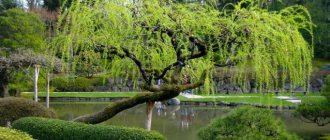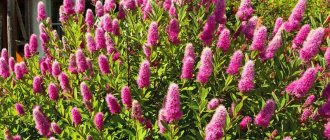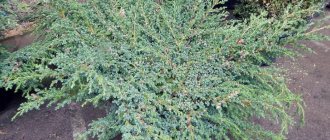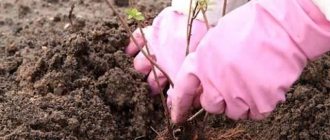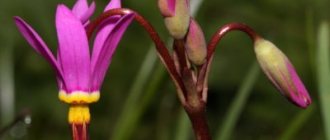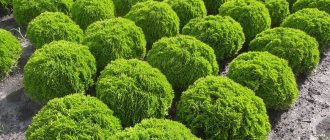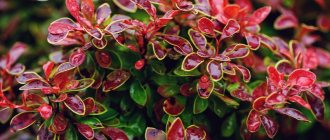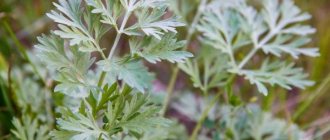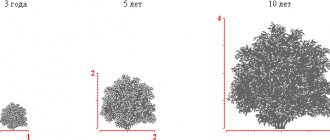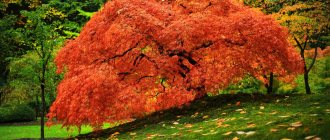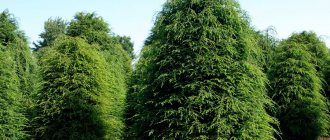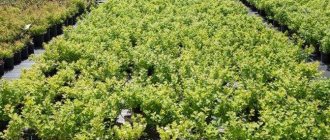Loosestrife, although a wild plant, is actively used by gardeners to decorate their garden plots. People love it for its beautiful, densely sown flowers, unpretentiousness and high growth rate. Despite the fact that the culture is not included in the State Pharmacopoeia of the Russian Federation, residents of Russia have long used it in folk medicine.
The coin loosestrife is popularly nicknamed “snake root” for its ability to quickly seize territory
Description of the coin loosestrife
Monetary loosestrife, or coin loosestrife (in Latin: Lysimachianummularia), is a perennial plant of the genus Loosestrife, family Primroses. The stems of the loosestrife are creeping, rooting at the nodes, reaching a length of 80 cm. The color is light green and has no edge. They are densely sown with oval-rounded leaves, reaching 3 cm in diameter. This type of loosestrife is nicknamed coin-like for its peculiar shape, similar to a coin. The flowers are bright yellow in color and also abundantly cover the entire length of the plant. Their long peduncle is located in the leaf axils. The loosestrife flower has 5 petals, shaped like a triangle or an oval, tapering towards the end. The diameter of the corolla ranges from 18 to 30 mm.
The flower has 5 glandular stamens, which are half shorter than the corolla, and one pistil. Flowering begins in May and lasts until August.
It is assumed that bees are attracted not by the smell of nectar, but by the fatty oils contained in the petals
The plant is pollinated by bees. They collect oil from the petals, mix it with pollen and use the raw material as food for the larvae. Fruiting begins immediately after flowering ends. The fruit is a round capsule with 5 valves. The seeds are small.
Loosestrife belongs to the group of ground cover and anti-erosion plants. Grows equally well on horizontal soil and on slopes.
Where does it grow
Loosestrife is a wild plant that lives both in the forest and on the banks of reservoirs and rivers, even in swamps. The culture loves moist soil and slight shade, so it can often be found in ravines.
The plant’s habitat is the entire European part of Russia, the North Caucasus. In Western Siberia it is found as an alien plant.
Chemical composition
Monetary loosestrife is rich in saturated acids and other beneficial substances. Stems, leaves and roots contain flavonoids - natural dyes with tanning and antibacterial properties. In the above-ground part of the loosestrife, the following are concentrated:
- Some phenolcarboxylic acids, namely caffeic and chlorogenic acids. They have a powerful antiseptic effect.
- Anthocyanins, which help reduce inflammation, improve intestinal barrier functions.
- Nitrogen-containing compounds: acetylcholine and choline. The latter is used for liver diseases and atherosclerosis.
Loosestrife root is also rich in catechins, which are strong antioxidants.
Features of common loosestrife
Herbalists use the above-ground part of the shoot to brew tea, which treats inflammatory processes in the gastrointestinal tract. The herbal tincture is also used externally. It is effective for suppuration, joint diseases, redness and inflammatory processes, and copes with swelling and dilated veins.
A vitamin drink is brewed from the inflorescences, which is recommended for ARVI and bronchitis. And thanks to the maximum concentration of vitamin C, loosestrife is one of the immunomodulators. For stomach diseases, indigestion, and for general strengthening of the immune system, an infusion of inflorescences and leaves is prescribed for internal use. To treat ulcers and bruises, use a compress soaked in a decoction.
To prepare a high-quality and healing decoction, use a tablespoon of dried herbs and inflorescences, which is poured with boiling water (250 ml). It is important to steep the tea for up to three hours. Take 10 ml orally. three times a day.
The procurement of raw materials is carried out during the period of active flowering development. It is dried, like many pharmacological types, under an awning or in a room with good air circulation. The raw materials are stored in a tight jar to prevent the formation of fungus. By planting the plant in a flowerbed or in the garden, the owners will receive an unpretentious shrub that will delight them with flowering and a lot of useful characteristics. In addition, inflorescences and leaves can always be used as raw materials for brewing tea. Absolutely everyone will like the loosestrife flower.
Currently reading:
- Choosing cucumbers for open ground according to your preferences
- Exquisite juncus (rumen) spiral-shaped in the interior
- Proper cultivation of Adenium succulent with your own hands
- Decoration and spicy pepper dish on the windowsill
Share the news on social networks
About the author: Vladimir Petrovich Efremov
Chief agronomist of the limited liability company “Association of Peasant (Farm) Farms “Kuznetsovskaya””, Ilovlinsky district of the Volgograd region.
Monetary loosestrife in landscape design
The use of loosestrife in gardening is due to its creeping shoots, which, as they grow, look like a huge yellow-green carpet. It is planted in shady, damp corners of the site, where it functions as a lawn. The hanging method of planting loosestrife is widespread: shoots hanging from hanging pots and flowerpots will beautifully decorate an outdoor outdoor gazebo.
Growing coin loosestrife in a flowerpot will take a minimum of effort and time, but the result is worthy of attention
Monetary loosestrife has several types:
- Loosestrife Aurea. It is a perennial plant with bright golden-green foliage. Inflorescences, red buds, appear in July, and with a lack of light only at the end of September. This species is very hardy: it is not afraid of either drought or excess humidity. The Aurea variety is frost-resistant and easily recovers from mechanical damage.
Loosestrife Aurea will help fill the empty space between the bushes
- Goldilocks coined loosestrife. Its distinctive feature is its multiple yellow inflorescences, which are several times greater than the number of light green leaves. The appearance of such a golden carpet attracts attention. But for the color to be rich, the plant must receive a lot of light. It grows quickly and can withstand slight drought and mechanical damage. A carpet of Goldilox coin loosestrife is even capable of displacing neighboring climbing and other ornamental plants.
It is undesirable to plant Goldilox on the border with a neighboring plot so that it does not creep into other people's property
Reproduction
Reproduction of loosestrife is possible by seed and vegetative methods. The latter is divided into reproduction by dividing bushes and shoots.
The seed method is used least often, since the productivity of the plant is very low. After planting, flowering occurs only in 2-3 years. Seeds are placed in the soil in November or March. Plant seedlings must undergo a stratification process (hardening). If sowing is carried out at the end of autumn, then in winter stratification will occur on its own. But for planting in March, the seeds should be placed in a damp mixture of soil and sand for the winter and stored in the basement or refrigerator.
Important! Only hardened seeds should be used: a plant that has not gone through this process will not survive.
Monetary loosestrife is propagated for seedlings in the same way, but only sown in a separate container with a prepared mixture of soil, sand and sedimentary rock. After planting, it is covered with glass or a transparent bag. The temperature must be stable, not less than + 15 oC. The sprouts will sprout in 14 days. They strengthen for some time and, when they become strong enough, they are transplanted into pots. Transplantation into open ground is carried out in June or July, depending on weather conditions.
Shoots 7-10 cm long are ready for spring transplantation into open ground
Propagating loosestrife by dividing a bush is the simplest and most effective method, which gives an almost 100% guarantee of crop germination. The division is carried out from a bush that is at least 3 years old. The procedure is carried out either in early spring or autumn.
An adult plant is carefully dug up without touching the roots. Next, it is divided so that each shoot has 2-3 shoots and a sufficient root system. The seedlings are placed in moist soil and trampled down a little.
Propagation by shoot cuttings is suitable if the adult loosestrife plant is at home with friends, acquaintances, or just on the street. To do this, shoots up to 20 cm long are cut into an adult bush and placed in water. The root formation process is so developed that you don’t even need to use the root growth stimulator “Kornevin”.
Important! The shoot must have several buds - growth points.
If the cuttings took place in the fall, the rooted shoots are planted indoors in a nursery. In spring, planting is carried out immediately in open ground. Flowering occurs next season.
Types and varieties of loosestrife with photos and names
The genus contains more than a hundred species. Let's look at the most popular ones in landscape design.
Common loosestrife Lysimachia vulgaris
Common loosestrife Lysimachia vulgaris photo
A herbaceous plant with erect stems 0.5-1 m high. In the natural environment, it is found on the Eurasian mainland and North Africa, where it grows near swamps, along the banks of reservoirs, and in forests. The leaf blades are oblong, lanceolate, with entire edges, some are located opposite, some are collected in whorls. The surface of the leaf blades is smooth, the bottom is pubescent. The bell-shaped corollas are collected into a paniculate inflorescence located at the top of the stem. The color is orange, with a red-brown spot at the base of the corolla. Flowering continues tirelessly all summer. Is a honey plant. Can be grown in water, deepened by 10 cm.
Loosestrife Lysimachia nemorum
Loosestrife Lysimachia nemorum photo
It can be found in Europe along the banks of reservoirs, stretching from the foothills to the subalpine zone. The height of the bush is only 30 cm. The leaf blades are large and wide. The inflorescences are solitary, sunny yellow, attached to long stalks. Blooms in May, pleasing for about 2 months.
Lysimachia thyrsiflora
Lysimachia thyrsiflora photo
The stems are erect, powerful, reaching a height of 0.6 m. In the natural environment, it is found along river banks and shallow waters. The leaf blades are narrow, sessile. Racemose inflorescences are located in the axils of the leaves; long stamens give them fluffiness. The corollas are yellow. Flowering begins at the end of May.
Loosestrife Lysimachia punctata
Lysimachia punctata photo
In the natural environment, it is distributed throughout the forests of Western and Central Europe. The shoots are erect, the surface is covered with fluff. The shape of the leaf blades is broadly lanceolate. The leaves are sessile. At the tops of the shoots there are lemon-yellow flowers. Flowering begins at the end of June and lasts about 4 weeks. Well-lit areas are preferred for growing.
The best varieties:
Loosestrife Alexander lysimachia punctata alexander photo
Alexander - leaf blades are edged with a white stripe.
Golden loosestrife Alexander lysimachia punctata golden alexander photo
Golden Alexander - green leaves are decorated with a golden border.
Lysimachia congestiflora
Loosestrife Persian chocolate Lysimachia congestiflora Persian Chocolate' photo
Originally from China, opened in 1992. A low bush with erect shoots. The leaves are oval-shaped with a pointed tip. The top of the stem is crowned with several large corollas of a golden yellow hue.
Popular varieties:
Loosestrife Lissy Lysimachia congestiflora Lissy photo
Lissy - bright green leaves, inflorescences: spherical whorls of a yellow hue.
Outback Sunset - dark green leaf blades are decorated with a yellow stripe. The flowers are yellow.
Persian carpet - the leaf plates are large, dark green in color, the veins are highlighted with a reddish tint. The flowers are yellow.
Persian chocolate - golden yellow inflorescences. The leaves have a purple tint.
Lysimachia clethroides
Lysimachia clethroides photo
The similarity with lily of the valley is manifested in the structure of the root system, but loosestrife has thicker roots. The height of the stem is 20 cm, the spike-shaped inflorescence adds about the same amount. Stems are erect, pubescent. Small snow-white flowers are collected in a dense inflorescence-spike. The flowering period starts at the end of June and lasts about 20 days.
Lysimachia clethroides 'Lady Jane'
Lady Jane - bushes 60-90 cm high, blooms in late summer.
Geisha is a variety with variegated leaves, their edges are decorated with a cream-colored border.
Monetary loosestrife, also known as coin loosestrife, or meadow loosestrife, meadow tea Lysimachia nummularia
Monetary loosestrife aka coin loosestrife or meadow loosestrife Lysimachia nummularia photo
Under natural conditions it is found in Europe, Japan and North America. Habitats: shady groves, edges of swamps, edges of reservoirs, floodplain meadows.
It is grown as a ground cover: the recumbent stems extend up to 30 cm. Creates a continuous cover on a flat surface and on steep slopes. Small oval-shaped leaves abundantly cover the stems. Single flowers appear in the leaf axils. When grown in a sunny area, the flowering period begins at the end of May, in shade – a little later.
The most popular variety is Aurea - leaf plates of a green-yellow hue. Frost resistance is lower than that of the original species; it is advisable to sprinkle it with dry leaves for the winter.
Purple loosestrife Lysimachia purpurea also known as ciliated loosestrife Lysimachia ciliata
Purple loosestrife in landscape design in combination with Lysimachia atropurpurea 'Beaujolais' and Aquilegia vulgairs var. stellata 'Black Barlow' photo
A bush with erect stems about 45 cm high. The species is widespread in North America. The leaf blades are broadly lanceolate in shape, arranged in pairs, and have a wine-red hue. The inflorescences are loose, they are located in the axils of the leaves. The corollas are sunny yellow. It is preferable to grow in areas with bright sunlight. Flowering occurs at the end of summer.
Black-purple loosestrife Lysimachia atropurpurea
Black-purple loosestrife Lysimachia atropurpurea in landscape design photo
Originally from Greece. The stems are erect, the height varies from 45 cm to 1 m. The leaf blades are oblong, the edges are slightly corrugated (this is better visible in young leaves). Graceful spike-shaped inflorescences consist of a large number of small flowers of an eggplant, almost black hue. Flowering begins at the end of July.
Beaujolais is the most popular variety, the color of the corollas is dark purple.
Lysimachia ephemerum
Ephemeral loosestrife Lysimachia ephemerum in landscape design photo
Found in southwestern Europe. The height of the erect stems is 0.9 m, the bush quickly grows in width. Small flowers in spike-shaped inflorescences begin to bloom in late summer. Pairs very nicely with veronicastrum.
Planting and caring for coin loosestrife
Monetary loosestrife is unpretentious in care. The first thing you should pay attention to is the choice of landing site. The culture loves shade and moist, loose soil. It will also take root well near bodies of water, then a little excess light will not hurt. Loosestrife will not take root on sandy and heavy loamy soils.
Important! Since the culture spreads very quickly, to avoid excessive root growth, loosestrife should be planted in a pot with no bottom.
Deadlines
Planting loosestrife in open ground can occur in late autumn or early spring. In the first case, young shoots spend the winter in specially prepared soil in the basement or vegetable department of the refrigerator. Seedlings are planted from May to August.
Landing algorithm
Before planting, the surface of the earth should be dug up; if the soil is poor in useful elements, it is important to add a little compost and peat. Dig a hole the depth of which is twice the length of the roots, and if planting is done together with a pot - to the size of the pot. Place a little prepared mixture of compost and peat on the bottom. Next, the loosestrife is placed in the hole and buried. It should be watered generously. When planting several plants, the distance between seedlings should be at least 50 cm.
Planting and caring for loosestrife in flowerpots is popular among gardeners. The plant also needs frequent soil moisture and shade.
Choosing a landing site
Shady areas with moist, nutritious soil are best suited for growing common loosestrife. It will feel best in the shade or partial shade, under trees, on the banks of reservoirs. But it also grows well in sunny areas.
[adsp-pro-4]
Monetary loosestrife can grow in one place for more than 10 years. This is an absolutely undemanding and unpretentious plant. It does not require fertilizing, is not affected by diseases and pests, and is resistant to trampling and mowing.
Necessary care
Caring for the crop is simple. You need to ensure there is enough water in the soil, periodic application of fertilizer (compost will do) and pruning of dry or damaged shoots.
Watering and fertilizing
Monetary loosestrife, planted in constantly moist soil (for example, near a pond), does not require watering. It is required only during prolonged drought or excessive exposure to sunlight. In dry times, the plant may dry out a little, but after watering it will fully recover. Watering is carried out before the onset of heat or at sunset.
It is also not necessary to fertilize the crop. But if necessary, expressed in fading of leaves or a strong slowdown in stem growth, fertilizing is carried out at the end of May or at the beginning of June. Any complex fertilizer for deciduous ornamental plants is suitable for this.
The favorite location of the coined loosestrife is at the edge of the reservoir
Weeding and loosening
Before planting loosestrife, which will act as a lawn on your garden plot, you should dig up the soil around it within a radius of 10 m, going deeper by about 15 cm. This is necessary in order to remove the roots of the weeds. Also, once every few years, if necessary, you can thin out the shoots to reduce the growth of loosestrife.
Preparation for winter and pruning
Before wintering, the coined loosestrife is thoroughly fed. Humus and mineral fertilizers should be added to the root. It is also possible to feed rotted leaves. Before applying fertilizers, loosen the soil a little. Despite the fact that the plant is frost-resistant, when severe frosts occur without snow cover, the loosestrife may dry out. Therefore, it should be covered with film for the winter. If the region has a mild, snowy winter, winter loosestrife is not insulated.
Over the course of 10 years, the loosestrife grows and, without control, can become a real disaster. Therefore, young shoots should be transplanted from the main bush in a timely manner. This is carried out at the end of October. In addition, after the plants' inflorescences decline and before cold weather, scheduled pruning is carried out.
Diseases and pests
Monetary loosestrife is extremely rarely susceptible to diseases and pests. Dangerous for him are:
- Powdery mildew. This is a white coating that is typical for excessively humid climates or damp summers. Traditionally, copper sulfate and Fundazol are used against it.
The name “powdery mildew” comes from the fact that drops form on the mycelium (white coating) after the spores mature, similar to dew
- Aphid. These are small light green insects that feed on plant juices, after which its fruiting decreases, the crop withers and may even die. Treatment with insecticides Biotlin and Antitlin will help.
Aphids are only a few millimeters in size
- Slugs. They infect common loosestrife quite rarely. They must be collected from the plant and treated with copper preparations.
Slugs spread various types of fungi on leaf surfaces
Medicinal properties and contraindications
The rich composition of microelements has antibacterial, antiviral and hemostatic effects. Vitamin C, together with rutin, helps strengthen capillaries, normalize the composition of the blood, and prevents it from becoming too thin. Has a beneficial effect on the overall strengthening of the immune system. However, there are contraindications for use:
- Dry cough.
- Phlebeurysm.
- Hypertension.
- Tendency to form blood clots.
- Vascular sclerosis of the extremities.
Application
In the past, loosestrife was used as tea; since then it has also been known as meadow tea. It was used to prevent scurvy in winter. In addition, loosestrife is useful for the following diseases:
- Gastrointestinal tract disorders.
- For headaches.
- For rheumatism.
- With vitamin deficiency.
- For wet cough and shortness of breath.
- For skin diseases.
In folk medicine there are decoctions of the leaves that have an anti-inflammatory effect. A compress of leaves will relieve skin irritations, and fresh juice will help with insect bites. Powder from the roots is used to eliminate bleeding. Based on the loosestrife, products are being developed to care for problematic facial skin, to combat acne and acne.
Important! Loosestrife is also used as a dye: green comes from the leaves, yellow from the flowers, and black from the roots.
To prevent the spread of monetized loosestrife, you can fence its planting site with slate or stones
Chemical composition
The widespread use of loosestrife in traditional and folk medicine, as well as the medicinal properties of the plant, are due to the chemical composition of its roots, leaves and flowers. It has been scientifically proven that these parts of the plant contain:
- Phenolcarboxylic acids and their derivatives;
- Tannins and saponins;
- Arginine and essential oil;
- Nitrogen-containing compounds;
- Rutin and primerase;
- Flavonoids and lactones;
- Hyperine and carbohydrates;
- Bitterness and tarry substances;
- Silicon and ascorbic acid.
Article on the topic: Graziolea - beneficial properties, description
